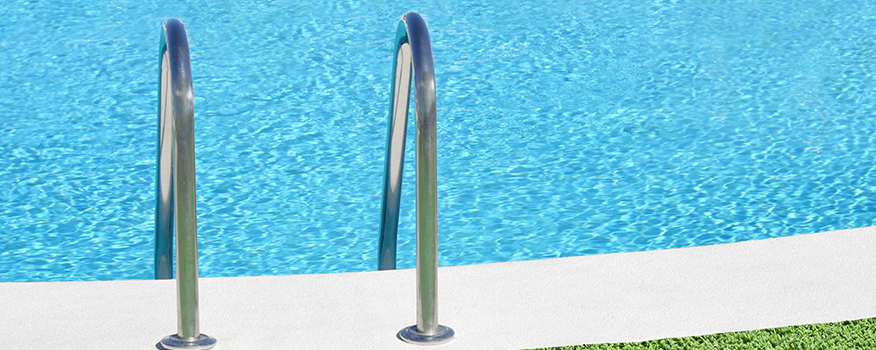Have you ever felt a shock while on your pool deck or while you are swimming? Have you ever considered getting shocked in your pool a possibility, outside of swimming during a thunderstorm? If so, the likely cause is stray voltage, and it is usually related to pools constructed without proper grounding. The practice of equipotential bonding prevents this from happening while you’re relaxing in your pool.
Before explaining how equipotential bonding can prevent you from being shocked by stray voltage, it’s important to understand how this voltage could shock you while you’re in your pool. When the metals attached to your pool, such as handrails and rebar in the concrete, are at a different voltage potential, any stray voltage that comes into the system is likely to flow through a person who touches these metals. Essentially, your body is going to act as a conductor for this voltage – and it is not a pleasant experience.
Stray voltage can come from pool heating systems or underwater lighting. Combine these electrical systems with pool chemicals that make the water more conductive, and you can see how stray voltage finds its way into a pool environment.
Stray voltage problems in a pool are preventable by ensuring metal pool accessories are at the same voltage potential. This is done through equipotential bonding in the pool-building process.
Equipotential bonding involves making sure that all the metal in a pool system is bonded together, bringing them to the same voltage potential. This also includes making sure that these metals are bonded to any electrical systems in your pool as well. Keeping all accessories at the same voltage potential greatly reduces the possibility of stray voltage shocking you while you’re in your pool. This also involves making sure that the system is bonded to something grounded as well, so stray voltage does into the earth instead of you.
There are many large metal pieces that need to be bonded:
- The reinforcing metal in the pool’s shell
- The metal in the pool deck
- Metal attached to pool lights
- Any metal attached directly to the pool
- Metal parts related to any electrical equipment such as pumps
Finally, the pool itself must also be bonded. This is done by bonding a metal fixture that is in direct contact with the pool water itself. The handrails of a pool usually do this job. While they may look like an obvious shock point, they actually help prevent shock.
For similar reasons, it’s important to make sure all metal in and around the pool is securely anchored. This includes all railings, water volleyball poles and deck umbrella poles.
Bonding can also mitigate lightning strikes to swimmers and delicate electrical systems in pools. It provides a safe pathway between the lighting’s energy and the earth.
Equipotential bonding is required by code, but it must be done right when building or expanding a pool. If it’s done right, you’ll never have to fear being shocked by your pool because of your heating system or underwater lights.
Swim with ease knowing how your pool has been built to prevent you from being shocked.



